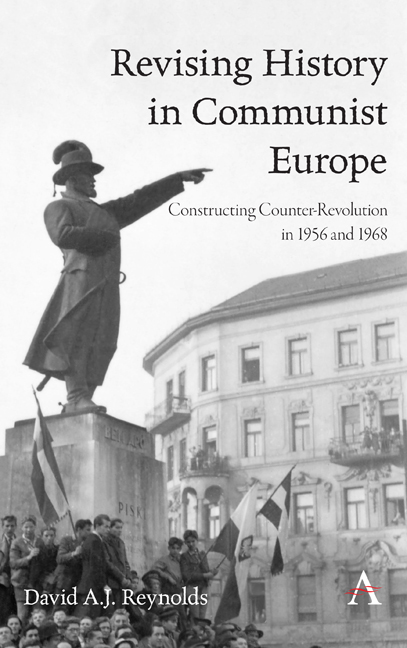Book contents
- Frontmatter
- Dedication
- Epigraph
- Contents
- Acknowledgements
- Introduction
- 1 The Export and Imposition of Stalinism
- 2 Hungarian De-Stalinization and Revising Recent History
- 3 A Revolution, a Counter-Revolution, or a National Uprising?
- 4 Stalinist Purges and De-Stalinization in Czechoslovakia
- 5 The Meaning of 1956 in 1968: March to June
- 6 June: Turning Point and the Hardening of Positions
- 7 July and August: Constructing Counter-Revolution
- 8 The Intentions of Intervention and the Shadow of 1956: Delusion and Failure
- Conclusion
- Epilogue
- Appendix
- Bibliography
- Index
5 - The Meaning of 1956 in 1968: March to June
Published online by Cambridge University Press: 16 February 2020
- Frontmatter
- Dedication
- Epigraph
- Contents
- Acknowledgements
- Introduction
- 1 The Export and Imposition of Stalinism
- 2 Hungarian De-Stalinization and Revising Recent History
- 3 A Revolution, a Counter-Revolution, or a National Uprising?
- 4 Stalinist Purges and De-Stalinization in Czechoslovakia
- 5 The Meaning of 1956 in 1968: March to June
- 6 June: Turning Point and the Hardening of Positions
- 7 July and August: Constructing Counter-Revolution
- 8 The Intentions of Intervention and the Shadow of 1956: Delusion and Failure
- Conclusion
- Epilogue
- Appendix
- Bibliography
- Index
Summary
There are three main groups of participants we will focus on, each of whom used Hungary's 1956 to explain, understand, and define the Prague Spring: the leaders of the Soviet Union, Hungary, and Czechoslovakia. Additionally, mainly by way of contrast, we will observe examples from nonstate voices within the Prague Spring and the other leaders of Warsaw Pact communist states. To do this we will draw upon records of meetings between these relevant leaders during this period, as well as internal discussions within these states and other public policy positions expressed in the press. As we explore, our analysis will be divided into two main chronological periods. The first period begins in March, when events in Czechoslovakia rose to the top of the Soviet Politburo agenda, and ends in June, while the second period takes us through those fraught July and August days up to and briefly beyond the invasion itself.
As we saw earlier in this study, definitions and categories matter because, to a large extent, they determine and justify how and why people and institutions behave as they do. It can sometimes be hard to determine when the process acts in this direction and when it is an actor's determination to behave in a certain way that is dictating the definitions. Usually both are occurring, with definition fuelling determination strengthening definition. At every step in the process, we will see how these players, schooled by both general European and specific communist experience, connected the meanings they accorded to history with the definitions they applied to the present. And, unsurprisingly, just as the definitions of the Prague Spring fluctuated according to both the actor and the moment, so too did the contested meanings of Hungary's 1956.
March to June: Avoidance, Contrast, and Warning
From March to June, the use of 1956 as an historical analogy and comparison with contemporary events in Czechoslovakia reflected the nearly unanimous desire among the relevant parties to avoid its repetition. Of course, there was not the same unanimity about what a repetition of 1956 would most saliently entail. These differences did not always mean a different interpretation of the 1956 events – although different interpretations were relevantly apparent. But across the differences, we can observe a tendency to employ 1956 as a sort of case study pointing to what must be avoided and negatively indicating how it could be avoided.
- Type
- Chapter
- Information
- Revising History in Communist EuropeConstructing Counter-Revolution in 1956 and 1968, pp. 95 - 134Publisher: Anthem PressPrint publication year: 2020

